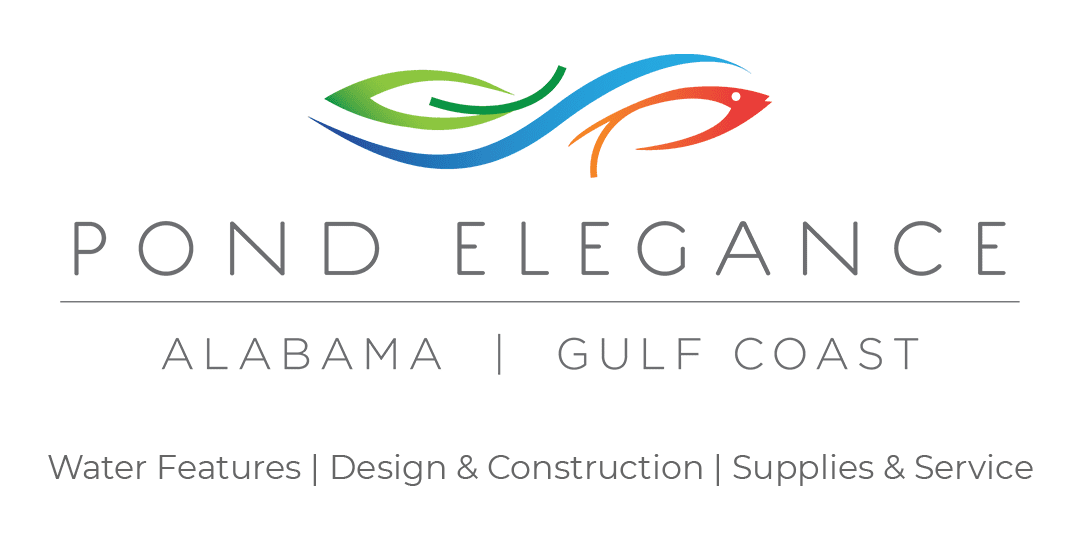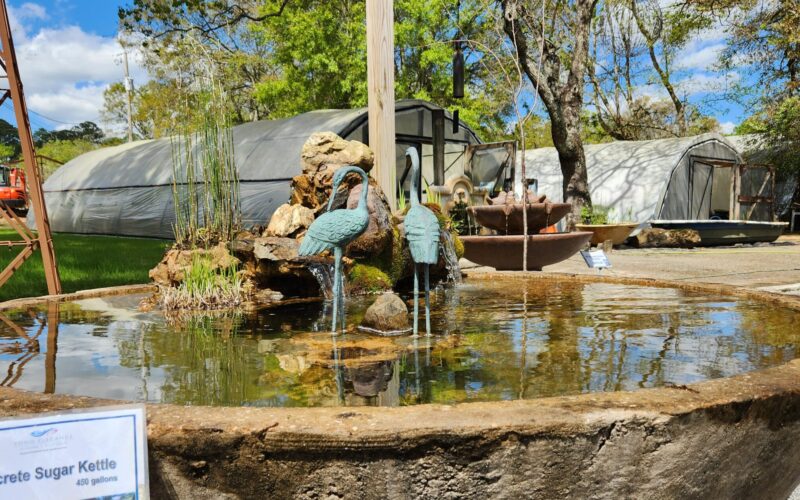
Spring is here! If you haven’t noticed the date on your calendar, Spring on the Gulf Coast is marked by an extreme weather pattern that changes from one day to the next. It is too hot! Then, suddenly, the plants need to be covered because of a night freeze.
Our Spring also begins with a burst of pollen that coats and covers our cars and lawn furniture in bright yellowish green. No surface outdoors is safe from the male catkins that drop from the Oak trees, either. The Azaleas blooms have dropped. The Camellia blooms are faded as the cold comes to an end. Pinecones and other organic materials are floating on the surfaces of our water features.
The outside sounds like chirping. Birds and grasshoppers are more vocal than the season before. Our nights are an orchestra of the woodlands come alive. The stars seem to shine brighter, although it may just be the return of fireflies. Regardless, we pond people get to enjoy Spring at the edge of our backyard oasis made of bubbling fountains, waterfalls, and gardens.
They too are experiencing great changes as the weather warms and wildlife returns. Is your backyard ready to be enjoyed? Have you started planning your big, outdoor events? Pond Elegance is here for the Gulf Coast, ready to service your space for optimal Spring entertainment.Â
If your water feature isn’t at its best, keep reading to get an idea of what you should expect from your Spring pond.
Your pond is going to need a good clean-out.
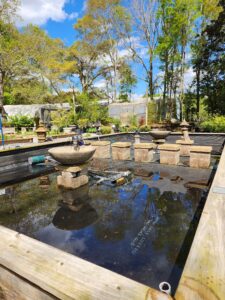
The first thing to expect from your Spring pond is water changes. Your pond is going to need a good clean-out for the change of season from Winter to Spring. Again, pinecones and other seed pods are dropping into your pond’s water. Organic matter that accumulates in your pond causes a few different problems.
Some problems are cosmetic, like green waters and floating string algae. Others are more detrimental to your ecosystem, like pH changes and oxygen levels.
Tree debris, fish waste, and uneaten fish food sink to the bottom of your pond. The organic matter that accumulates at the bottom of your pond is called sludge. Plants that were left to overwinter in your pond also add to the organic matter that becomes pond sludge, also known as bottom sediment. If you have fish and new plants in your pond, sludge can be a serious issue.
Too much of the bottom sediment in your pond can reduce the level of oxygen in your water. Oxygen is necessary for your plants, Koi fish, and Goldfish to survive. Oxygen levels directly correlate to fish energy, spawning, and appetite. Overall, oxygen is a key ingredient to healthy fish. Having healthy fish means you have a healthy pond.Â
Most fish deaths occur in the Spring time.
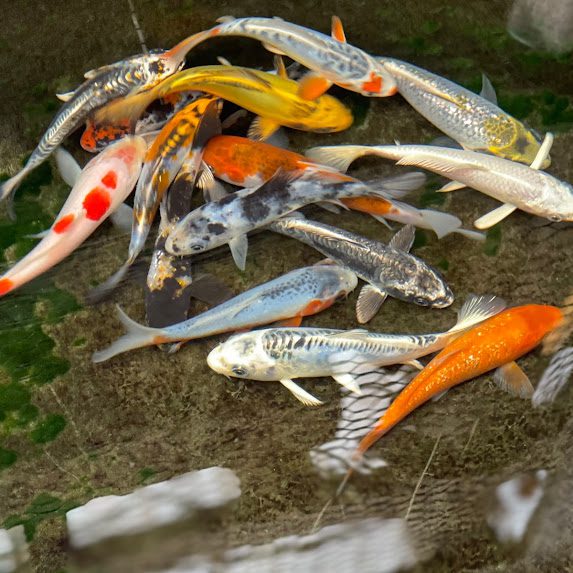
Unfortunately, most fish deaths occur in the Spring time because of temperature changes as well as water quality changes. Be sure to change your water regularly by removing 10% – 20% of your old water and replacing it with new, clean water.
Water quality can be determined by clarity, pH, and salt content. Unsure about the true quality of your water? Visit Pond Elegance with a sample of your pond water and get it tested.
Algae is the biggest culprit behind dirty, unclear waters. Algae thrive on warmth, sunlight, and excess nutrients in your pond.
Be sure to feed your fish enough that they are able to finish their food within five minutes. Clean out any uneaten food. Remove dead plants and debris from your waters. Most importantly, only care for the amount of fish that your pond can handle without excess excrement and other waste.
Algae also thrives in a slightly higher pH than your ideal pond range. You want your pond to be at a pH of about 7 – 7.5. Algae’s ideal is about 8.2.
You can control algae bloom, string algae, or pea soup-colored water, with monthly water changes, strategic shade, proper water flow, and balance of nutrients. Shade can be accomplished by plants, such as Lilies, umbrellas, sail shade, and even water dye.
Good algae live on the liner.
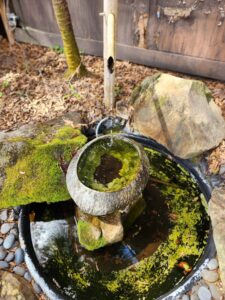
If your pond is already experiencing a green change, speak with a professional about the best way to clean your pond. Good algae live on the liner. That is your biological environment. Nuisance algae may require chemical or professional intervention.
Visit Pond Elegance at 3210 Dawes Rd. Mobile, Alabama to shop for algae control essentials. If necessary, schedule a professional assessment early in the season as the calendar tends to fill quickly.Â
Next, the Spring pond should be full of healthy plants. Plants that were left in the pond over winter are now ready to re-emerge. Lilies may produce small leaves at the beginning of the spring. They won’t bloom until summer, but their leaves will begin to spread throughout the Spring season.Â
This is your sign to begin your fertilizer regime. Remember, be very careful with your nutrient levels. Too much fertilizer can cause algae, pH, and oxygen issues. Still, once your pond waters are about 75 degrees Fahrenheit, use a tablet of fertilizer, pushed into your plant’s soil, once a month.
Your water’s surface should be shaded.
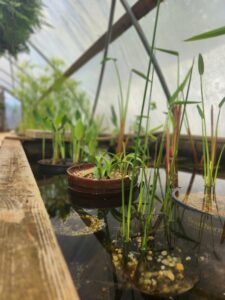
Now is also a good time to shop for new plants, separate rhizome plants, and size up or repot your root-bound plants. Plants are such an integral part of a healthy Spring pond. Your water’s surface should be about 70% shaded, and plants are a beautiful way to achieve this shade need. Plants also give wildlife a place of hiding and refuge.
Your fish will appreciate the shade and hideaway that your plants provide. Your fish will have a few different needs in the change of season.
When the water begins to warm, 75 degrees and above, make the transition from Cool Water Wheat food to a probiotic food. When summer comes, change their food to a color and size-specific formula. Pond Elegance carries all of the Blue Ridge brand fish food. Just in time for the new season, all Koi and Goldfish food is 25% off through the month of March.Â
As the sun gets higher, the pond heats up. Keep in mind, Spring water temperatures lead to more disease in fish. Koi and Goldfish are more likely to die at the start of spring because algae, bacteria, parasites, and fungi thrive in warmer waters. Dirty, sun-soaked water is a breeding ground that can harm your fish.Â
Salt works against the bad stuff.
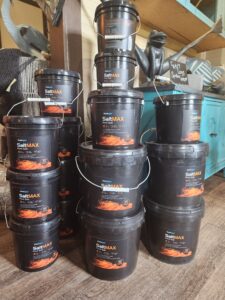
Adding salt to your pond is a great way to keep your Koi healthy through the change. Salt creates an environment that works against bacteria, parasites, and fungi. Your fish also get the added benefit of a thicker slime coat from the salt. This slime coat protects your fish from illnesses and diseases.
Be sure to use the correct amount and type of salt in your pond. Too much salt can have adverse effects on both fish and plants in your ecosystem. Talk to a professional if you have questions about your specific pond size. Remember the goal is to protect your fish and keep them healthy.
In Spring, healthy fish spawn. You may notice your Koi racing around the edges of your pond later in the season. You will also see foam and bubbles on the top of the water. Your fish may be more physical with one another. What is actually happening, is a courting of sorts. Male fish chase female fish and encourage them to drop their eggs.
When the females drop their eggs, the males immediately fertilize them. Although thousands of eggs are fertilized, very few grow into mature fish. Most of the eggs, if not all, are eaten by the other fish.
This Spring, Pond Elegance is carrying Spawning Brushes, a rope of bristles where the eggs attach. Using a Spawning Brush enables you to separate the eggs to give them a better chance to survive.Â
The warmer the water, the more Koi eat.

Another key to fish survival is proper feeding. Koi are cold-blooded, therefore, their metabolism is responsive to temperatures. The warmer the waters, the more your fish will want to eat. The colder the waters, the slower their metabolism and the less they will eat. Feeding should be increased throughout the season.Â
Taking care of your fish and pond can be easy with the right equipment. The start of the season is a great time to check your pumps, clean your filters, and purchase new UV lights. Always keep the surface of your pond clear of tree debris and seed pods. Your fountain and aerator’s lifespan depend on that bit of regular maintenance.
If you don’t have the skill or the time to tend to your water feature, call on the professionals at Pond Elegance. Having weekly, monthly, or even one-time servicing can make all the difference in the health of your pond and the longevity of your equipment.Â
Be prepared for the wildlife.
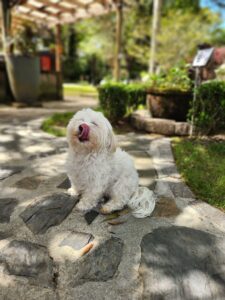
Your clean, healthy pond will likely invite more than your friends to its edges. Be prepared for the wildlife that will also enjoy, and possibly destroy your peaceful waters.Â
Flowing, moving waters will keep the mosquitoes at bay. Your fish will also snack on larvae that are left behind. The sound of moving water will also attract dragonflies. Dragonflies aren’t just a joy to watch, they also eat mosquitoes. Sloping edges and marginal plants serve as homes for dragonflies if you want them to stay around.Â
Another pond friend is the frog. Frogs and fish generally leave one another alone. Fish will snack on a tadpole if frogs feel safe enough in your pond to leave eggs behind. Frogs also earn their keep by keeping mosquitoes and other insect populations low. Frogs feast on flies, spiders, and mites that cause trouble in your garden. Frogs are true friends to gardeners.
Not all pond visitors are friends. Mosquitoes, birds, and rodents can ruin your happy place. Prepare your pond and gardens with motion sprinklers, solar-powered scarecrows, and decoy predators. Herons, raccoons, and other predators can go after your fish at any time, but now is a good time to get ahead of their hunt.Â
Spring has begun and temperatures are rising. If your pond isn’t quite ready for the changes, get in touch with Tammie at Pond Elegance. Serving the Gulf Coast’s commercial & residential pond owners since 1986, Pond Elegance has a wide selection of supplies, brands, fish, and aquatic plants.
